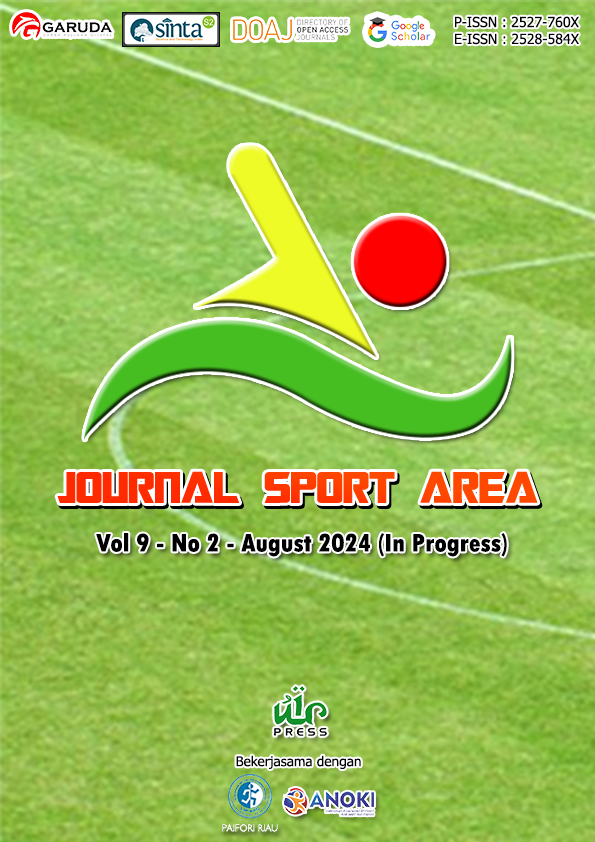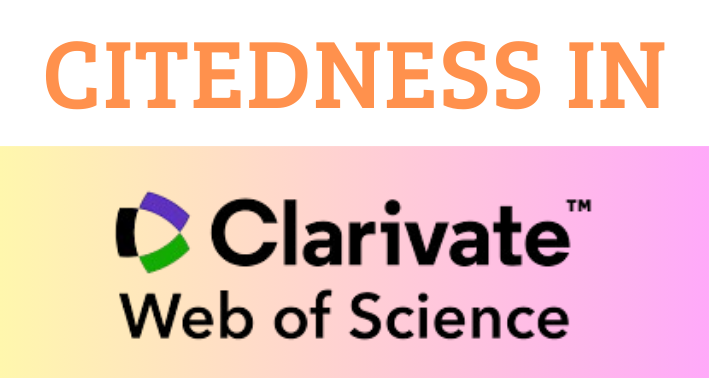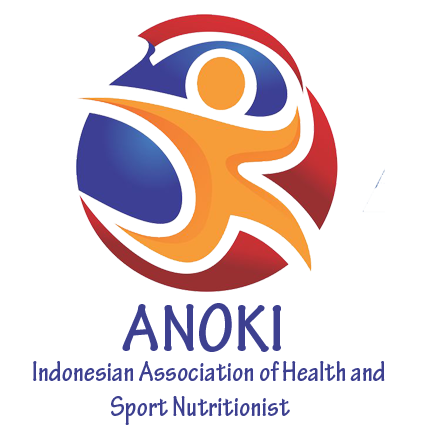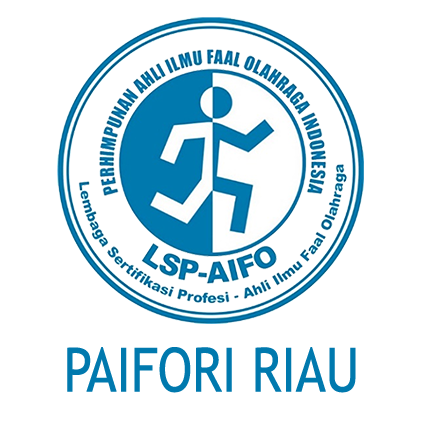Endurance training for judo athletes: Improving anaerobic and aerobic capacity in the high altitude
Keywords:
aerobic capacity, anaerobic capacity, elite athletes, JudoAbstract
Background Problems: Judo is a sport that requires aerobic and anaerobic abilities. This is because the scoring in judo matches is different from other martial arts, where athletes will look for absolute 'ippon' points in one match. Therefore, training is needed that can support increasing aerobic and anaerobic capacity in judo athletes. Endurance training at high altitudes is a training method that is believed to have benefits for athletes' aerobic and aerobic capacity. Research Objectives: The study aims to examine the effect of endurance training on increasing the anaerobic and aerobic capacity of judo athletes based on the Special Judo Fitness Test (SJFT), which is a specific test for the sport of judo that can describe anaerobic and aerobic fitness according to the needs of judo. Methods: This research was conducted in the Puncak area of West Java, which is included in the highlands. An experimental method was used in this research on twenty-four Indonesian elite judo athletes who are carrying out training camps to face the SEA Games in Vietnam in 2021. The t test using SPSS Version 24 was used for data analysis in this study. Findings and Results: The results showed that there was a significant increase in anaerobic and aerobic capacity at high altitudes in judo athletes, as seen from the SJFT. Conclusion: This study concluded that endurance training could increase the anaerobic and aerobic capacity of judo athletes in the highlands. Endurance training at high altitudes for judo athletes is highly recommended because it has been proven to have a significant effect on increasing anaerobic and aerobic capacity. We recommend that judo coaches carry out training at high altitudes because it has been proven to improve the aerobic and anaerobic abilities of judo athletes.
Downloads
References
Álvarez-Herms, J., Julià-Sánchez, S., Gatterer, H., Blank, C., Corbi, F., Pagès, T., Burtscher, M., & Viscor, G. (2016). Anaerobic Training in Hypoxia: a New Approach to Stimulate the Rating of Effort Perception. Physiology & Behavior, 163, 37–42. https://doi.org/10.1016/j.physbeh.2016.04.035
Bahenský, P., Bunc, V., Tlustý, P., & Grosicki, G. J. (2020). Effect of an Eleven-Day Altitude Training Program on Aerobic and Anaerobic Performance in Adolescent Runners. Medicina (Lithuania), 56(4), 1–9. https://doi.org/10.3390/medicina56040184
Bangsbo, J. (2015). Performance in Sports - with Specific Emphasis on the Effect of Intensified Training. Scandinavian Journal of Medicine and Science in Sports, 25(4), 88–99. https://doi.org/10.1111/sms.12605
Bartel, C., Coswig, V. S., Protzen, G. V., & Del Vecchio, F. B. (2022). Energy Demands in High-Intensity Intermittent Taekwondo Specific Exercises. PeerJ, 10, 1–14. https://doi.org/10.7717/peerj.13654
Bompa, T., & Buzzichelli, C. A. (2019). Periodization: Theory and Methodology of Training. Human Kinetics.
Bompa, T., & Carrera, M. (2015). Conditioning Young Atheletes. Human Kinetics.
Bonato, M., Rampichini, S., Ferrara, M., Benedini, S., Sbriccoli, P., Meranti, G., Franchini, E., & Torre, A. La. (2015). Aerobic Training Program for the Enhancements Of HR and VO2 Off-Kinetics in Elite Judo Athletes. J Sports Med Phys Fitness, 55(11), 102-123.
Brito, C. J., Moreira, D. G., Fernandes, J. R., Ferreira, A. P., Córdova, C., Silva, R. A. S. da, & Miar, B. (2017). Technical-Tactical Comparisons between Weight Divisions in Elite Judo Athletes. Journal of Strength and Conditioning Research, 17(S4.A), 49–67. https://doi.org/10.5628/rpcd.17.S4A.49
Brocherie, F., Millet, G. P., Hauser, A., Steiner, T., Wehrlin, J. P., Rysman, J., & Girard, O. (2015). Association of Hematological Variables with Team-Sport Specific Fitness Performance. PLOS ONE, 10(12), e0144446. https://doi.org/10.1371/journal.pone.0144446
Burns, A., & Callan, M. (2017). Strength and Conditioning for Judo. The Crowood Press Ltd.
Castellani, J. W., & Tipton, M. J. (2016). Cold Stress Effects on Exposure Tolerance and Exercise Performance. Comprehensive Physiology, 6(1), 443–469. https://doi.org/10.1002/cphy.c140081
Chapman, R. F., Karlsen, T., Ge, R. L., Stray-Gundersen, J., & Levine, B. D. (2016). Living Altitude Influences Endurance Exercise Performance Change Over Time at Altitude. Journal of Applied Physiology, 120(10), 1151–1158. https://doi.org/10.1152/japplphysiol.00909.2015
Chawla, S., & Saxena, S. (2014). Physiology of High-Altitude Acclimatization. Resonance, 19(6), 538–548. https://doi.org/10.1007/s12045-014-0057-3
da Silva, Santana, L., Neto, N. R. T., João Paulo Lopes-Silva, C. G. L., & Silva-Cavalcante., M. D. (2022). Training Protocols and Specific Performance in Judo Athletes: A Systematic Review. The Journal of Strength & Conditioning Research. https://doi.org/10.1519/JSC.0000000000004015
Dopico, X., Iglesias-Soler, E., & Carballeira, E. (2014). Classification of Judo Motor Skills: Tactical and Motor Criteria Approach. Archives of Budo Science of Martial Arts and Extreme Sports, 10, 75–83. https://smaes.archbudo.com/view/abstract/id/10737
Dragos, O., Alexe, D. I., Ursu, E. V., Alexe, C. I., Voinea, N. L., Haisan, P. L., Panaet, A. E., Albina, A. M., & Monea, D. (2022). Training in Hypoxia at Alternating High Altitudes Is a Factor Favoring the Increase in Sports Performance. Healthcare (Switzerland), 10(11), 1–11. https://doi.org/10.3390/healthcare10112296
Faisal, J., & Sepdanius, E. (2020). Pengaruh Latihan Interval Training Terhadap Daya Tahan Anaerobic Pemain Futsal Klub Putri Kabupaten Siak. Jurnal Stamina, 3(2), 112–123.
Fraenkel, J. R., Wallen, N. E., & Hyun, H. H. (2022). How to Design and Evaluate Research in Education. McGraw Hill LLC.
Franchini, E. (2021). High-Intensity Interval Training in Judo Uchi-Komi Fundamentals and Practical Recommendations. The Arts and Sciences of Judo, 1(1), 35–45. h
Franchini, E., Brito, C. J., Fukuda, D. H., & Artioli, G. G. (2014). The Physiology of Judo-Specific Training Modalities. Journal of Strength and Conditioning Research Research, 28(4), 1474–1481. https://doi.org/10.1519/JSC.0000000000000281
Franchini, E., Del Vecchio, F. B., & Sterkowicz, S. (2009). A Special Judo Fitness Test Classificatory Table. Archives of Budo, 5, 127–129. https://archbudo.com/view/abstract/id/10661
Francisco, V., Decatoire, A., & Bidet-Ildei, C. (2023). Action Observation and Motor Learning: the Role of Action Observation in Learning Judo Techniques. European Journal of Sport Science, 23(3), 319–329. https://doi.org/10.1080/17461391.2022.2036816
Gio, M., Indika, P. M., Sari, A. P., & Bahtra., R. (2021). Perbandingan Volume Oksigen Maksimal Atlet Sepakbola di Dataran Tinggi dan Dataran Rendah. Jurnal Stamina, 4(6), 266-275.
Gist, N. H., Fedewa, M. V., Dishman, R. K., & Cureton., K. J. (2014). Sprint Interval Training Effects on Aerobic Capacity: A Systematic Review and Meta-Analysis. Sports Medicine, 44(2), 269–279. https://doi.org/10.1007/s40279-013-0115-0
Gwotmut, M. D. (2023). Relationship Between Cardiorespiratory Fitness, Maximum Oxygen Consumption [Vo2max] and Some Hematological Parameters in Athletes in Port Harcourt. Unizik Journal of Educational Research and Policy Studies, 15(2), 185–200.
Joyner, M. J., & Dominelli, P. B. (2021). Central Cardiovascular System Limits to Aerobic Capacity. Experimental Physiology, 106(12), 2299–2303. https://doi.org/10.1113/EP088187
Whayne, T. F. Jr. (2014). Cardiovascular Medicine at High Altitude. Angiology, 65, 459–472. https://doi.org/10.1177/0003319713497086
Kajmovic, H., Karpljuk, D., Kapo, S., & Simenko, J. (2022). Comparison of Individual Penalties According to Gender and Weight Categories of Elite Judo Athletes from Four World Championships. Biology, 11(9), 1–11. https://doi.org/10.3390/biology11091284
Khodaee, M., Grothe, H. L., Seyfert, J. H., & VanBaak, K. (2016). Athletes at High Altitude. Sports Health, 8(2), 126–132. https://doi.org/10.1177/1941738116630948
Langeskov-Christensen, M., Heine, M., Kwakkel, G., & Dalgas, U. (2015). Aerobic Capacity in Persons with Multiple Sclerosis: A Systematic Review and Meta-Analysis. Sports Medicine, 45(6), 905–923. https://doi.org/10.1007/s40279-015-0307-x
Li, J., Li, Y., Atakan, M. M., Kuang, J., Hu, Y., Bishop, D. J., & Yan, X. (2020). The Molecular Adaptive Responses of Skeletal Muscle to High-Intensity Exercise/Training and Hypoxia. In Antioxidants (Vol. 9, Issue 8). https://doi.org/10.3390/antiox9080656
Lukanova-Jakubowska, A., Piechota, K., Grzywacz, T., Ambroży, T., Rydzik, Ł., & Ozimek, M. (2022). The Impact of Four High-Altitude Training Camps on the Aerobic Capacity of a Short Track PyeongChang 2018 Olympian: A Case Study. International Journal of Environmental Research and Public Health, 19(7). https://doi.org/10.3390/ijerph19073814
McLean, B. D., Gore, C. J., & Kemp, J. (2014). Application of ‘Live Low-Train High’ for Enhancing Normoxic Exercise Performance in Team Sport Athletes. Sports Medicine, 44(9), 1275–1287. https://doi.org/10.1007/s40279-014-0204-8
Novian, G., & Noors, I. P. M. (2020). Hubungan Gaya Kepemimpinan Pelatih dengan Prestasi Atlet Taekwondo. Gladi : Jurnal Ilmu Keolahragaan, 11(02), 151–164. https://doi.org/10.21009/gjik.112.07
Nurkadri, N., & Hayati, R. (2020). Pengaruh Dataran Tinggi terhadap Tingkat Kebugaran Jasmani Mahasiswa Universitas Negeri Manado. Kinestetik: Jurnal Ilmiah Pendidikan Jasmani, 4(1), 79–84. https://doi.org/10.33369/jk.v4i1.10411
Park, H.-Y., Hwang, H., Park, J., Lee, S., & Lim, K. (2016). The Effects of Altitude/Hypoxic Training on Oxygen Delivery Capacity of the Blood and Aerobic Exercise Capacity in Elite Athletes - A Meta-Analysis. Journal of Exercise Nutrition & Biochemistry, 20(1), 15–22. https://doi.org/10.20463/jenb.2016.03.20.1.3
Pierantozzi, E., Morales, J., Fukuda, D. H., Garcia, V., Antonia, M. G., Guerra-balic, M., & Carballeira, E. (2022). Effects of a Long-Term Adapted Judo Program on the Health-Related Physical Fitness of Children with ASD. International Journal of Environmental Research and Public Health, 19, 1–14. https://doi.org/10.3390/ijerph192416731
Ploszczyca, K., Langfort, J., & Czuba, M. (2018). The Effects of Altitude Training on Erythropoietic Response and Hematological Variables in Adult Athletes: A Narrative Review. Frontiers in Physiology, 9(APR). https://doi.org/10.3389/fphys.2018.00375
Popović, B., Gušić, M., Radanović, D., Andrašić, S., Madić, D. M., Mačak, D., Stupar, D., Ðukić, G., Grujičić, D., & Trajković, N. (2020). Evaluation of Gross Motor Coordination and Physical Fitness in Children: Comparison between Soccer and Multisport Activities. International Journal of Environmental Research and Public Health, 17(16), 1–10. https://doi.org/10.3390/ijerph17165902
Purnamasari, I., Ariati, C., Mulyana, B., & Novian, G. (2021). Penurunan Indeks Massa Tubuh: Latihan Continuous Run pada Atlet Judo Kota Bogor. Jurnal Sains Keolahragaan dan Kesehatan, 6(1), 61–69. https://doi.org/10.5614/jskk.2021.6.1.7
Purnamasari, I., Listiandi, A. D., Novian, G., & Hidayat, B. (2022). Kondisi Fisik Atlet Judo Jawa Barat pada saat Pandemi COVID-19: Tinjauan Tahap Persiapan Umum. JOSSAE (Journal of Sport Science and Education), 7(1 SE-Articles), 24–33. https://doi.org/10.26740/jossae.v7n1.p24-33
Ramchandani, R., Florica, I. T., Zhou, Z., Alemi, A., & Baranchuk, A. (2024). Review of Athletic Guidelines for High-Altitude Training and Acclimatization. High Altitude Medicine & Biology, 25(6) https://doi.org/10.1089/ham.2023.0042
Ramos-Campo, D. J., Martínez, F., Esteban, P., Rubio-Arias, J. A., & Jiménez, J. F. (2016). Intermittent Hypoxic Training and Cycling Performance in Triathletes. Revista Internacional de Medicina y Ciencias de La Actividad Fisica y Del Deporte, 16(61), 139–156. https://doi.org/10.15366/rimcafd2016.61.011
Robach, P., & Lundby, C. (2020). Altitude Training and Endurance Performance BT - Triathlon Medicine (S. Migliorini (ed.); pp. 329–343). Springer International Publishing. https://doi.org/10.1007/978-3-030-22357-1_20
Rozita, E. P., Khairsyaf, O., & Afriani. (2022). High Altitude Pulmonary Physiology. Bioscientia Medicina : Journal of Biomedicine and Translational Research, 6(8), 2040–2049. https://doi.org/10.37275/bsm.v6i8.552
Ruddock, A., James, L., French, D., Rogerson, D., Driller, M., & Hembrough, D. (2021). High-Intensity Conditioning for Combat Athletes: Practical Recommendations. Applied Sciences, 11(22). 1-14 https://doi.org/10.3390/app112210658
Santos, L., Fernández-Río, J., Almansba, R., Sterkowicz, S., & Callan, M. (2015). Perceptions of Top-Level Judo Coaches on Training and Performance. International Journal of Sports Science and Coaching, 10(1), 145–158. https://doi.org/10.1260/1747-9541.10.1.145
Santoso, S. (2017). Complete Guide to Mastering Statistics with SPSS 24. PT. Elex Media Komputindo.
Serebrovskaya, T. V., & Xi, L. (2016). Intermittent Hypoxia Training as Non-Pharmacologic Therapy for Cardiovascular Diseases: Practical Analysis on Methods and Equipment. Experimental Biology and Medicine, 241(15), 1708–1723. https://doi.org/10.1177/1535370216657614
Sharma, A. P. (2022). Factors Affecting Sea-Level Performance Following Altitude Training in Elite Athletes. Journal of Science in Sport and Exercise, 4(4), 315–330. https://doi.org/10.1007/s42978-022-00198-6
Sumpena, A., & Sidik, D. Z. (2017). The Impact of Tabata Protocol to Increase the Anaerobic and Aerobic Capacity. IOP Conference Series: Materials Science and Engineering, 180(1). 1-7. https://doi.org/10.1088/1757-899X/180/1/012189
Tomazin, K., Almeida, F., Stirn, I., Padial, P., Bonitch-Góngora, J., Morales-Artacho, J., A., Strojnik, V., & Feriche., B. (2021). Neuromuscular Adaptations after an Altitude Training Camp in Elite Judo Athletes. International Journal of Environmental Research and Public Health, 18(13). https://doi.org/10.3390/ijerph18136777
Townsend, N. E., Gore, C. J., Ebert, T. R., Martin, D. T., Hahn, A. G., & Chow., C.-M. (2016). Ventilatory Acclimatisation is Beneficial for High-Intensity Exercise at Altitude in Elite Cyclists. European Journal of Sport Science, 16(8), 895–902. https://doi.org/10.1080/17461391.2016.1139190
Ulbricht, A., Fernandez-Fernandez, J., Mendez-Villanueva, A., & Ferrauti, A. (2016). Impact of Fitness Characteristics on Tennis Performance in Elite Junior Tennis Players. The Journal of Strength & Conditioning Research, 30(4). https://doi.org/10.1519/JSC.0000000000001267
Viscor, G., Torrella, J. R., Corral, L., Ricart, A., Javierre, C., Pages, T., & Ventura, J. L. (2018). Physiological and Biological Responses to Short-Term Intermittent Hypobaric Hypoxia Exposure: from Sports and Mountain Medicine to New Biomedical Applications. Frontiers in Physiology, 9(Jul), 1–20. https://doi.org/10.3389/fphys.2018.00814
Wazir, M. R. W. N., Torfs, M., Mostaert, M., Pion, J., & Lenoir, M. (2017). Predicting Judo Champions and Medallists using Statistical Modelling. Archives of Budo, 13, 161–168.
Wilber, R. L. (2022). Practical Application of Altitude/Hypoxic Training for Olympic Medal Performance: The Team USA Experience. Journal of Science in Sport and Exercise, 4(4), 358–370. https://doi.org/10.1007/s42978-022-00168-y
Wyatt, F. B. (2014). Physiological Responses to Altitude: A Brief Review. Journal of Exercise Physiology, 17(1), 90–96. https://www.asep.org/asep/asep/jeponlinefebruary2014_wyatt.pdf
Yang, Y. J. (2019). An Overview of Current Physical Activity Recommendations in Primary Care. Korean Journal of Family Medicine, 40(3), 135–142. https://doi.org/10.4082/kjfm.19.0038
Yu, Y., Wang, R., Li, D., & Lu, Y. (2023). Monitoring Physiological Performance over 4 Weeks Moderate Altitude Training in Elite Chinese Cross-Country Skiers: An Observational Study. International Journal of Environmental Research and Public Health, 20(1). 266-277. https://doi.org/10.3390/ijerph20010266
Published
How to Cite
Issue
Section
Copyright (c) 2024 Ira Purnamasari, Geraldi Novian, Mona Fiametta Febrianty, Alen Rismayadi

This work is licensed under a Creative Commons Attribution-ShareAlike 4.0 International License.
This is an open-access article distributed under the terms of the Creative Commons Attribution-ShareAlike 4.0 International License which permits unrestricted use, distribution, and reproduction in any medium. Copyrights of all materials published in Journal Sport Area are freely available without charge to users or / institution. Users are allowed to read, download, copy, distribute, search, or link to full-text articles in this journal without asking by giving appropriate credit, provide a link to the license, and indicate if changes were made. All of the remix, transform, or build upon the material must distribute the contributions under the same license as the original.
Accepted 2024-06-20
Published 2024-07-28


















